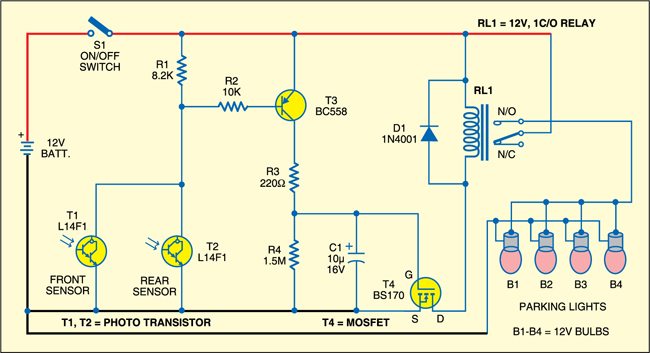 At night, parking lights make your parked car visible to motorists so they don’t smash into your car. However, these lights drain considerable power out of your car’s battery. Here is a simple, automatic parking light system that works with zero standby current. The circuit is designed to turn on the parking lights automatically for 30 seconds when an approaching vehicle’s light is detected from the rear or front side. This automatic feature provides safety at night for a parked vehicle.
At night, parking lights make your parked car visible to motorists so they don’t smash into your car. However, these lights drain considerable power out of your car’s battery. Here is a simple, automatic parking light system that works with zero standby current. The circuit is designed to turn on the parking lights automatically for 30 seconds when an approaching vehicle’s light is detected from the rear or front side. This automatic feature provides safety at night for a parked vehicle.
Automatic parking light circuit
The circuit is built around transistors T1 through T3, MOSFET T4 (BS170) and some discrete components. Darlington photo-transistors T1 and T2 (each L14F1) act as the front and rear sensors. When light from an approaching vehicle falls on the respective photo-transistor, transistor T3 conducts to trigger the gate of MOSFET T4 through R3. Relay RL1 energises for a period determined by resistor R4 and capacitor C1 and switches on the parking lights (B1 through B4) through its N/O contacts. After the predetermined time elapses, relay RL1 de-energises and the parking lights turn off.

Assemble the circuit on a general-purpose PCB and enclose in a suitable case. Mount the front and rear sensors (photo-transistors T1 and T2) such that these receive light from an approaching vehicle directly, not the ambient light such as street light. Fix 12V bulbs B1 through B4 at an appropriate location in your vehicle or in the parking area.
The articlde was originally published on September 2008 and has been recently updated.
Feel interested? Check out other electronics projects.






thank you